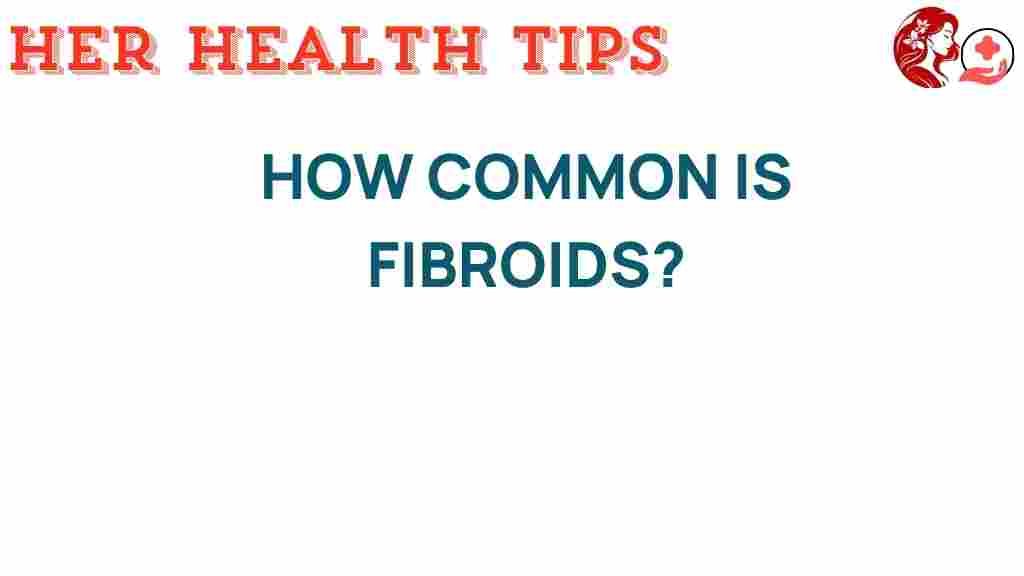Unveiling the Mystery: How Common Are Fibroids Among Women?
Fibroids, also known as uterine leiomyomas, are non-cancerous growths that develop in the uterus. These benign tumors are a common concern in women’s health and can significantly impact reproductive health. Understanding the prevalence of fibroids, their symptoms, diagnosis, and treatment options is crucial for women everywhere. In this article, we will explore how common fibroids are among women, the associated reproductive disorders, and the importance of awareness in healthcare.
The Prevalence of Fibroids
Fibroids are remarkably prevalent among women of reproductive age. Studies indicate that:
- About 70-80% of women will develop fibroids by the age of 50.
- They are more common in African American women, with studies showing a prevalence rate of up to 80%.
- Fibroids can occur at any age, but they are most frequently diagnosed in women between the ages of 30 and 40.
The exact cause of fibroids remains unclear, but hormonal factors, particularly estrogen and progesterone, are believed to play a significant role. Genetics may also contribute to a woman’s likelihood of developing fibroids.
Understanding Symptoms of Fibroids
Many women with fibroids experience no symptoms at all. However, for those who do, the symptoms can vary widely based on the size, location, and number of fibroids present. Common symptoms include:
- Heavy Menstrual Bleeding: This is one of the most common symptoms and can lead to anemia.
- Pelvic Pain: Some women experience discomfort or pain in the pelvic area.
- Frequent Urination: Fibroids can press against the bladder, leading to increased urgency.
- Back Pain: Large fibroids can cause pressure on the lower back.
- Complications During Pregnancy: Though rare, fibroids can affect fertility and pregnancy outcomes.
If you’re experiencing any of these symptoms, it’s essential to consult a healthcare provider for an accurate diagnosis and appropriate treatment.
Diagnosis of Fibroids
Diagnosing fibroids typically involves a combination of medical history assessment, physical examination, and imaging tests. Here are the common methods healthcare providers use:
- Pelvic Exam: A doctor may feel for abnormalities in the uterus during a pelvic exam.
- Ultrasound: This is the most common imaging technique to visualize the size and location of fibroids.
- MRI: An MRI provides a detailed view of fibroids and helps in treatment planning.
- Hysteroscopy: This procedure allows doctors to look inside the uterus using a thin, lighted tube.
Treatment Options for Fibroids
The treatment for fibroids largely depends on the severity of symptoms and the size of the fibroids. Options range from monitoring to surgical interventions:
1. Watchful Waiting
For women who do not experience significant symptoms, doctors may recommend a watchful waiting approach, which involves regular check-ups without immediate treatment.
2. Medications
Several medications can help manage symptoms, including:
- Hormonal Treatments: Birth control pills or hormonal IUDs can help regulate menstrual cycles.
- GnRH Agonists: These can shrink fibroids but are typically used for short periods due to side effects.
3. Minimally Invasive Procedures
For those requiring treatment, there are several minimally invasive options:
- Uterine Fibroid Embolization (UFE): This procedure cuts off blood supply to fibroids, causing them to shrink.
- Laparoscopic Myomectomy: Removes fibroids while preserving the uterus, suitable for women wishing to retain fertility.
4. Surgical Options
In severe cases, surgical options may be necessary:
- Abdominal Myomectomy: This involves a larger incision to remove fibroids.
- Hysterectomy: This is a complete removal of the uterus and is considered when fibroids cause severe symptoms and fertility is not a priority.
Awareness and Education in Women’s Health
Raising awareness about fibroids is crucial for women’s health. Many women remain unaware of the symptoms and treatment options available. Education can lead to timely diagnoses and more effective management of fibroids. Here are some ways to promote awareness:
- Community Outreach: Health organizations can host workshops and informational sessions.
- Online Resources: Websites and social media campaigns can reach a broader audience.
- Support Groups: Connecting women with shared experiences can foster a supportive community.
To learn more about women’s health and reproductive disorders, visit WomensHealth.gov for comprehensive resources.
Troubleshooting Tips for Managing Fibroids
For women diagnosed with fibroids, here are some tips to manage symptoms and improve overall well-being:
- Maintain a Healthy Diet: A diet rich in fruits, vegetables, and whole grains can support overall health.
- Regular Exercise: Staying active can help manage weight and reduce symptoms.
- Stress Management: Techniques such as yoga, meditation, or therapy can help alleviate stress, which may worsen symptoms.
Conclusion
In conclusion, fibroids are a common reproductive disorder that affects a significant number of women, particularly during their reproductive years. Awareness, early diagnosis, and appropriate treatment can help manage symptoms effectively and improve quality of life. By understanding the prevalence of fibroids and the available options for treatment, women can take charge of their reproductive health. If you suspect you have fibroids or are experiencing related symptoms, do not hesitate to reach out to a healthcare provider for guidance and support.
For more information on reproductive health and fibroids, consider visiting this resource for detailed insights and expert advice.
This article is in the category Reproductive and created by HerHealthTips Team
